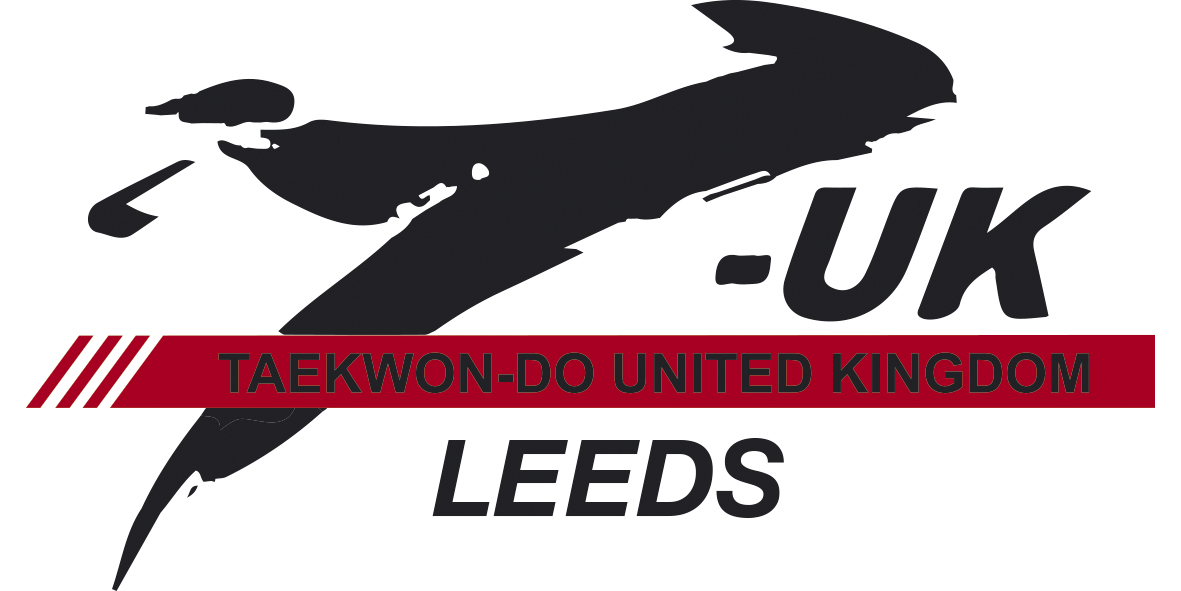THE GRADING SYSTEM
WHITE BELT TO YELLOW BELT
White Belt (10th Kup) – Signifies innocence and lack of knowledge within Taekwondo
White Belt with Yellow Stripe (9th Kup)
Yellow Belt (8th Kup) – Represents the seed taking root in the earth, as Taekwondo takes root in its student
Yellow Belt with Green Stripe (7th Kup).
GREEN BELT TO BLUE BELT
Green Belt (6th Kup) – Signifies the growing plant and the student’s growing Taekwondo skills
Green Belt with Blue Stripe (5th Kup)
Blue Belt (4th Kup) – Represents the skies, the direction in which the plant is growing
Blue Belt with Red Stripe (3rd Kup).
RED BELT TO BLACK BELT
Red Belt (2nd Kup) – Red signifies danger, warning the student and those around him of his abilities
Red Belt with Black Stripe (1st Kup).
KOREAN COUNTING
There are two different numbering systems that are used by Koreans. The first numbering system is used when counting, or when only speaking of the numbers themselves. The first ten numbers in this system are as follows:
1 : hanah
2 : dool
3 : set
4 : net
5 : dasot
6 : yasot
7 : ilgop
8 : yadol
9 : ahop
10 : yool
The stress in “hanah”, “dasot”, and “yasot” is on the first syllable, in “ilgop”, “yadol”, and “ahop” on the second. In counting cadence in TaeKwonDo, this is so emphasized that the other syllable frequently almost disappears (e.g., “han”, “das”, “yos”, “lgop”, “hop”, etc.).
TENETS OF TAEKWONDO
ye ui : courtesy
yom chi : integrity
in nae : perseverance
guk gi : self-control
baekjool boolgool : indomitable spirit
BASIC BODY PARTS
mom : body
kwanjeol : joint
mori : head
angoo : eyeball
katdung : nose
in joong : philtrum
mok : neck
eukhe : shoulder
myong chi : solar plexus
pal : arm
palkup : elbow
palmok : forearm
an palmok : inner side of forearm
bakat palmok : outer side of forearm
meet palmok : palm side of forearm
wi palmok : back side of forearm
dung palmok : back of forearm
sonmok gwanjol : wrist joint son : hand
sonkal : outside edge of hand (knifehand)
sonkal dung : inside edge of hand (ridgehand)
son dung : back hand
joomuk : fist
songarak : finger
sonkut : fingertip
hori : waist
sataguni: groin
dari : legs
moorup : knee
jong kwaeng-i : shin
bal mok : ankle
bal : foot (or feet)
baltung : instep
bal kal : outside edge of foot
ap kumchi : ball of foot
dwit kumchi : heel
dwit chook : bottom of heel
balkut : toes
BODY MOVEMENTS
makgi : block
chagi : kick
jirugi : twist or punch
taerigi : strike
tulgi : thrust
matsogi : sparring
bituro : twisting
omgyo didigi : stepping
gujari dolgi : spot turn
twigi : jumping
mikulgi : sliding (also “mee kul gi”)
japgi : holding/grabbing
donjigi : throwing
pihagi : dodging
hecho : spreading
DIRECTIONS
orun : right
wen : left
ap : front
an : inner
bakat : outer
bandae : reverse
dwi : back
annuro : inward
bakuro : outward
wi : high (up)
kaunde : middle
nopunde : high
najunde : lo
RANK
kup : grade
dan : degree
Assistant instructor : Boosabum
Grand Master : Saesong
International Instructor : Guk Jae Sabumnim
Master : Sahyun
President : Chung-Jae Sabumnim
Student : Jeja
dan gup jedo : system of rank
HAND POSITIONS
sonkal : knifehand
sonkal dung : ridgehand
sonbadak : palm
son dung : back hand
bandalson : arc hand
jipje son : pincers hand
joomuk : fist
dung joomuk : back fist
yup joomuk : side fist
inji joomuk : forefinger one-knuckle fist
joongi joomuk : middle-finger one-knuckle fist
umji joomuk : thumb knuckle fist
pyun joomuk : flat (or open) fist
HAND ATTACKS
baro jirugi : straight (return) punch
bandae jirugi : reverse punch
sewo jirugi : vertical punch
dwijibo jirugi : upset punch
naeryo jirugi : downward punch
ollyo jirugi : upwards punch
digutja jirugi : `U’-shaped punch
BLOCKS
bakat palmok makgi : outer forearm block
an palmok makgi : inner forearm block
sang palmok makgi : twin forearm block
annuro makgi : inward block
bakuro makgi : outward block
chookyo makgi : rising block
daebi makgi : guarding block
gutja makgi : `9′-shaped block (cross block)
kyocha makgi : `X’-shaped block (also “kyo cha mahki”)
noollo makgi : pressing block
STANCES
sogi : stance
narani junbi sogi : parallel ready stance
annun sogi : sitting stance
dwitbal sogi : rear foot stance
gunnan sogi : walking stance
niunja sogi : sparring stance
nachuo sogi : low stance
gojung sogi : fixed stance
goburyo junbi sogi : bending ready stance
moa sogi : closed stance
sasun sogi : diagonal stance
kyocha sogi : `X’-stance
waebal sogi : one-leg stance
soojik sogi : vertical stance
SPARRING
jayu matsogi : (free) sparring
ilbo matsogi : one step sparring
ibo matsogi : two step sparring
sambo matsogi : three step sparring
ju ui : warning
gam jum : foul
sil kyuk : disqualification
chong : blue
hong : red
PATTERNS
tul : pattern
UNIFORM
tie : belt
dobok : uniform
ha’i : training pants
sang’i : training pants
COMMANDS
charyot : attention
junbi : ready
Pa-ro : return to starting position
dwiyo torra : about turn
gomman : stop
haesan : class dismissed (also “hae cho”)
kyong-ye : bow
koo ryung op see : in your own time
sijak : begin
swiyo : relax / at ease
gaesok : continue
